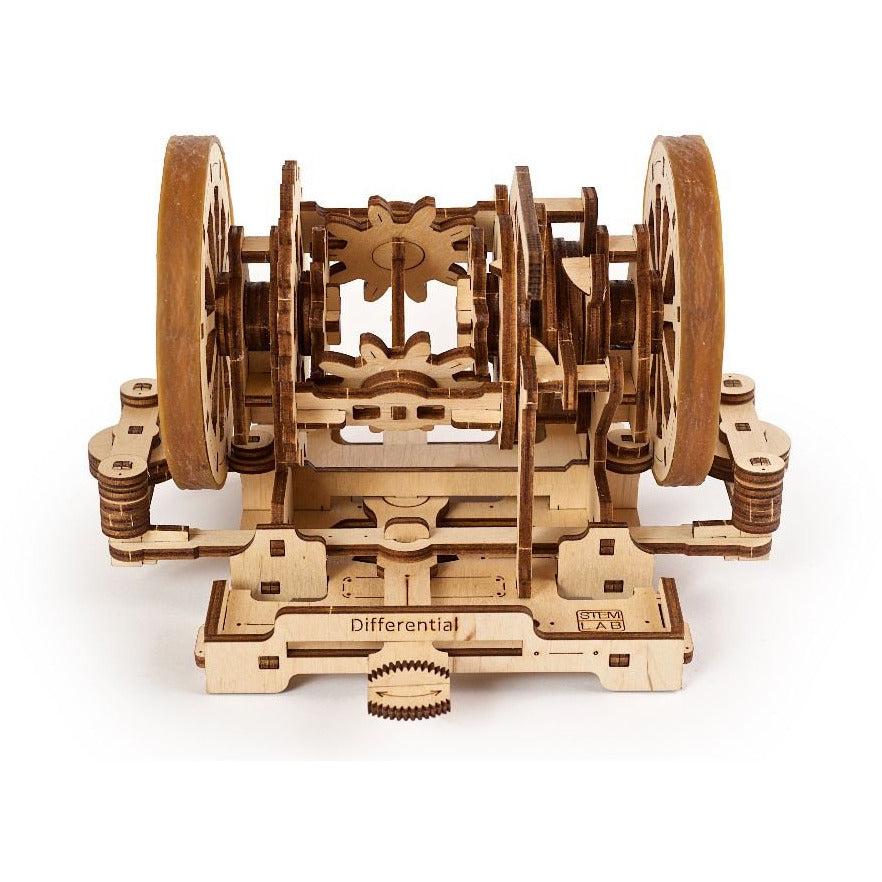Ugears Stem Lab Differential
Ugears Stem Lab Differential
The Differential is a stylized educational model, an interactive study guide to the mechanism, only for learning its essentials and principles of working. The Differential was designed to ensure that the drive wheels sitting on the same axle rotate with a different rate and cover different distances at the same time. This mechanism allows the car to make turns without the wheels skidding, prevents wheel-slip, reduces tire wear, and makes entering and going out of turns easier for the driver. Having assembled the Differential, your can unblock it pushing the lever in position 1 (Up) and set both wheels in motion by rotation of the drive gear or the wheel. The Control lever regulates the smooth locking of the left and right wheels independently by turning left or right respectively. In the "down" position of the lever, both wheels are linked in a rigid coupling and can either rotate together (propelled by the drive gear or a wheel) or lock simultaneously (by the lever of the wheel).
When and who invented it:
The car differential was invented by French engineer Onesiphore Pecqueur in 1825. In the 1930s of the 20th century, German automotive engineer Ferdinand Porsche made significant improvements to the device.
Usage:
Differentials are used mainly in cars as a part of the transmission mechanism. They improve maneuverability and performance of a car.
The mechanism of the Differential is composed of:
- The drive gear
- The locking lever
- The side gear
- The locking clutch
- The wheel
- Model size: 6.9*5.3*4.1 in (17.5*13.5*10.5 cm)
- Package size: 8.1*7.4*2.5 in (20.5*18.8*6.3 cm)
- Number of components: 163
- Estimated time of assembly: 1-2 hours
Couldn't load pickup availability
Out of stock
View full details

